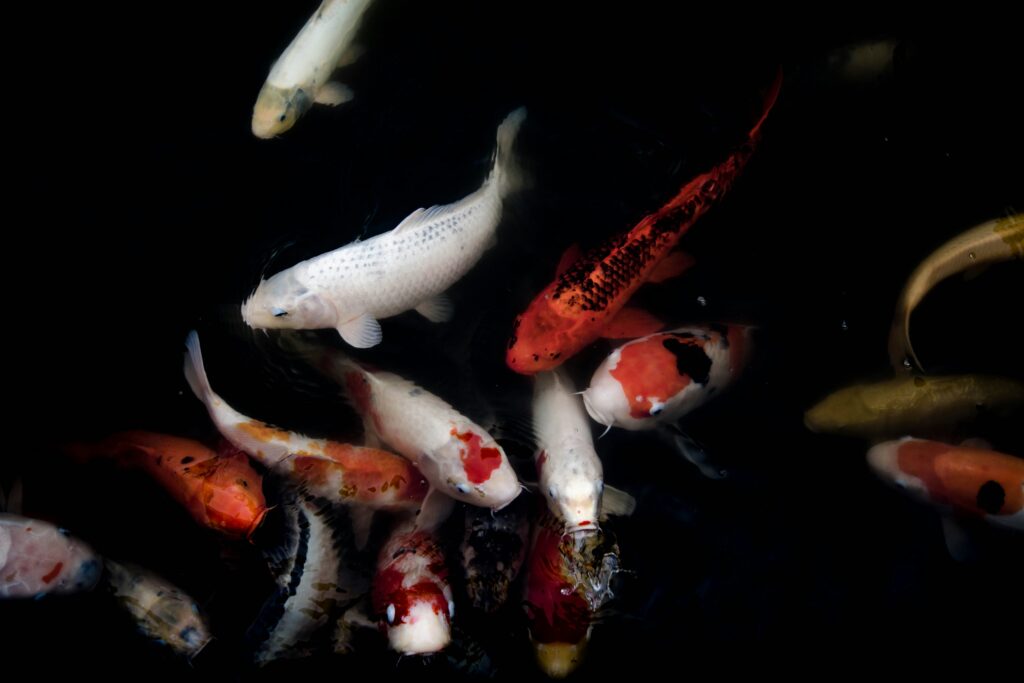If you ever find yourself faced with the challenge of treating fish ulcers, fear not, for there are effective methods to heal your aquatic friends. So, how do you treat fish ulcers you may ask, because obviously, they can be bothersome and, if left untreated, can lead to serious health issues for your fish.
In this post, we will explore some of the tried and tested techniques to treat fish ulcers, ensuring your finned companions make a swift recovery and thrive in their underwater habitat. From medicinal treatments to proper hygiene practices, we will guide you in providing the best care for your fish and keeping them happy and healthy.

Understanding Fish Ulcers
Fish ulcers are open sores or wounds that occur on the body of a fish. These ulcers can range in size and severity, and if left untreated, they can lead to serious health issues and even death. Understanding fish ulcers is crucial for proper treatment and prevention.
What are fish ulcers?
Fish ulcers are often caused by bacterial or parasitic infections that penetrate the fish’s skin and create wounds. These wounds can become infected, leading to the formation of ulcers. Fish ulcers are typically characterized by red, inflamed areas on the fish’s body, which may have an open sore or lesion. It’s important to note that fish ulcers are not contagious to humans.
Causes of fish ulcers
Fish ulcers can be caused by various factors, including poor water quality, improper nutrition, overcrowding, and parasite or bacterial infections. When fish are exposed to unfavorable conditions, their immune systems weaken, making them more susceptible to infections and the development of ulcers.
Identifying fish ulcers
Identifying fish ulcers can be relatively easy if you know what to look for. Common signs include red, inflamed areas on the fish’s body, open sores or lesions, and changes in behavior such as decreased appetite or increased lethargy. It’s important to regularly observe your fish and look for any abnormal changes in their appearance or behavior to catch ulcers early on.
Preventive Measures
Taking preventive measures to avoid fish ulcers is essential for maintaining the health and well-being of your fish. By implementing the following strategies, you can minimize the risk of ulcers and promote a healthy aquatic environment.
Maintaining good water quality
One of the most crucial preventive measures is maintaining good water quality. Regularly test the water parameters such as pH, ammonia, nitrate, and nitrite levels to ensure they are within the appropriate range for your fish. Proper filtration, regular water changes, and the use of conditioners can help maintain optimal water quality.
Proper nutrition
Providing your fish with a well-balanced diet is essential for their overall health and immunity. Make sure you are feeding them nutritionally suitable food and avoid overfeeding, as excess food can contribute to poor water quality. Consult with a veterinarian or aquatic specialist to determine the best diet for your fish species.
Avoid overcrowding
Overcrowding can lead to increased stress levels, compromised immune systems, and the spread of diseases among fish. Ensure your aquarium or pond is properly sized for the number and size of fish you have. Aim for appropriate fish-to-water ratios and provide enough swimming space for each fish to reduce stress and prevent the development of ulcers.
Isolation and Quarantine
Isolating infected fish and setting up a quarantine tank are essential steps to prevent the spread of ulcers to other healthy fish. By implementing proper isolation and quarantine practices, you can effectively manage and treat fish ulcers.
Separating infected fish
When you notice a fish with ulcers, promptly remove it from the main tank to prevent further contamination. This will help protect the other fish in your aquarium or pond from potential infection. Net the fish gently and place it in a separate container or quarantine tank for further observation and treatment.
Setting up a quarantine tank
A quarantine tank is a separate aquarium or container where you can house sick or injured fish. It should be adequately sized, properly filtered, and have its own water source. This separate environment allows you to closely monitor and treat the infected fish without risking the health of the rest of your aquatic community.
Observation and monitoring
Once you have isolated the infected fish in a quarantine tank, closely observe and monitor its behavior and the progression of the ulcers. Regularly check the fish for any changes in behavior or the appearance of the ulcers. This will help you assess the effectiveness of the treatment and make any necessary adjustments.
Medications for Fish Ulcers
Medications play a crucial role in the treatment of fish ulcers, especially in more severe cases. Depending on the severity of the ulcers and the underlying cause, different types of medications may be necessary.
Antibiotics
Bacterial infections are a common cause of fish ulcers. Antibiotics can be used to treat these infections and promote healing. It is essential to choose the appropriate antibiotic based on the type of bacteria causing the infection and follow the dosage and treatment instructions provided by a veterinarian or aquatic specialist.
Antiseptics
Antiseptics help prevent further infection and promote healing by inhibiting the growth of bacteria. These topical treatments can be applied directly to the ulcers and the surrounding area. Common antiseptics used in fish ulcer treatment include hydrogen peroxide and povidone-iodine solutions.
Topical treatments
Topical treatments such as ointments or creams can be applied directly to the ulcers to promote healing and prevent secondary infections. These treatments often contain ingredients like antibacterial agents, wound healing compounds, and soothing agents to alleviate pain and inflammation. Always follow the instructions provided with the specific topical treatment you are using.

Natural Remedies
In addition to medications, there are also natural remedies that can help in the treatment of fish ulcers. Many of these remedies have been used for centuries and are known for their healing properties.
Salt baths
Salt baths are a common natural remedy for fish ulcers. By creating a saline solution and immersing the fish in it, you can help reduce inflammation, prevent infection, and promote healing. It’s crucial to use the correct amount of salt and follow proper procedures when administering salt baths, as improper use can harm the fish.
Tea tree oil
Tea tree oil is known for its antiseptic and antimicrobial properties. It can be used as a natural treatment for fish ulcers by diluting a few drops in water and applying it to the ulcers. Tea tree oil should be used sparingly and with caution, as it can be toxic to fish in high concentrations.
Aloe vera
Aloe vera gel has soothing and healing properties that can aid in the treatment of fish ulcers. Applying a small amount of pure aloe vera gel to the ulcers can help reduce inflammation, promote healing, and provide relief to the affected fish. Make sure to use pure aloe vera gel without any added chemicals or preservatives.
Water Parameter Management
Proper management of water parameters is crucial in promoting fish health and preventing the development of ulcers. By regularly testing and maintaining optimal water conditions, you can create a favorable environment for your fish to thrive.
Testing water parameters
Regularly test the water parameters in your aquarium or pond to ensure they are within the appropriate range for your fish species. Use reliable water testing kits to measure parameters such as pH, ammonia, nitrate, and nitrite levels. Based on the results, take the necessary steps to adjust the water conditions if needed.
Maintaining pH levels
Maintaining stable pH levels is essential for fish health. Fluctuations in pH can stress fish and weaken their immune systems, making them more susceptible to infections and the development of ulcers. Depending on your fish species, adjust the pH levels according to their specific requirements and monitor them regularly.
Temperature control
Maintaining the appropriate temperature for your fish is crucial for their overall well-being. Temperature fluctuations can stress fish and compromise their immune systems. Research the ideal temperature range for your fish species and use a reliable thermometer to monitor and control the water temperature consistently.

Wound Care and Cleaning
Proper wound care and cleaning are essential in the treatment of fish ulcers. By following the appropriate steps, you can effectively clean and treat the ulcers, promoting healing and minimizing the risk of further infection.
Removing dead tissue
Before applying any treatments or dressings, it’s important to gently remove any dead or necrotic tissue from the ulcers. Use sterilized tweezers or a clean cloth to carefully remove the dead tissue without causing further damage to the fish. This step helps create a clean wound bed for faster healing.
Applying antiseptic solution
After removing the dead tissue, clean the ulcers and the surrounding area with an antiseptic solution. This helps disinfect the wounds and prevent further infection. Follow the instructions provided with the antiseptic solution and apply it gently using a clean cotton swab or gauze pad.
Protective wound dressings
To create a protective barrier and promote healing, apply a suitable wound dressing to the ulcers. There are various types of dressings available, including antibiotic-impregnated dressings, hydrogels, and sterile non-stick gauze pads. Choose the appropriate dressing based on the severity of the ulcers and consult with a veterinarian if needed.
Supportive Care
Providing supportive care to fish with ulcers is vital for their overall well-being and recovery. By focusing on optimal nutrition, stress reduction, and immune system enhancement, you can assist in the healing process.
Providing optimal nutrition
Ensure that the fish with ulcers receive a balanced and nutritious diet. Feeding them high-quality food that meets their dietary requirements will help boost their immune systems and provide the necessary nutrients for healing. Consult with a veterinarian or aquatic specialist to determine the best diet for your fish species.
Stress reduction techniques
Stress can exacerbate fish ulcers and delay the healing process. Implement stress reduction techniques such as providing adequate hiding places, minimizing sudden changes in the environment, and maintaining a calm and quiet atmosphere. Minimizing stress will aid in faster healing and overall fish health.
Enhancing immune system
A strong immune system is crucial for fish to fight off infections and heal effectively. Enhance your fish’s immune system by providing them with a clean and stress-free environment, proper nutrition, and supplements if recommended by a veterinarian. A healthy immune system will aid in the healing of fish ulcers.

Importance of Observation
Regularly observing your fish is crucial for the early detection of ulcers and tracking the healing progress. By paying close attention to your fish and their behavior, you can identify any changes or issues early on, allowing for prompt intervention and treatment.
Regular monitoring of fish
Take some time each day to observe your fish closely. Look for any changes in behavior, appetite, or appearance. Regular monitoring allows you to identify any potential issues, including the development or worsening of ulcers, and take appropriate action promptly.
Detecting early signs of ulcers
Early detection is key in effectively treating fish ulcers. Keep an eye out for red, inflamed areas on your fish’s body, open sores or lesions, or any changes in behavior that may indicate the presence of ulcers. The sooner you identify these signs, the sooner you can start the appropriate treatment.
Tracking healing progress
As you treat the ulcers, track the healing progress of your fish. Take note of any changes in the appearance of the ulcers, such as a decrease in redness or size, and monitor your fish’s behavior to gauge their overall well-being. This will help you determine if the treatment is working and if any adjustments are necessary.
Consulting a Veterinarian
In some cases, fish ulcers may require professional veterinary intervention. Knowing when to seek professional help, getting an accurate diagnosis, and receiving expert advice and guidance are essential for the successful treatment of fish ulcers.
When to seek professional help
If the ulcers on your fish do not improve with the implemented treatments, or if they worsen over time, it may be necessary to consult a veterinarian. Additionally, if you are unsure about the appropriate treatment for your fish or have any concerns, it is always best to seek professional help.
Getting accurate diagnosis
Veterinarians who specialize in aquatic medicine can provide an accurate diagnosis of the underlying cause of fish ulcers. Through physical examination and possibly additional tests, such as skin scrapings, bacterial cultures, or biopsies, they can identify the specific bacteria, parasites, or other factors contributing to the ulcers. This allows for targeted treatment and prevention strategies.

Expert advice and guidance
Consulting a veterinarian can provide you with expert advice and guidance tailored to your specific situation. They can recommend the most effective medications, natural remedies, or management strategies based on the diagnosis and severity of the ulcers. Veterinary professionals can also address any concerns or questions you have, helping ensure the best possible outcome for your fish.
How Do You Treat Fish Ulcers
By understanding fish ulcers, implementing preventive measures, and following proper treatment protocols, you can effectively manage and treat these wounds. Remember to regularly observe your fish, track the healing progress, and consult with a veterinarian when needed. With the right care and attention, your fish can recover from ulcers and maintain their overall health and well-being.
For more informational posts, check out ‘How To Know When A Pond Is Ready For Fish‘, which will offer some great advice before making the decision to add fish to your pond.
